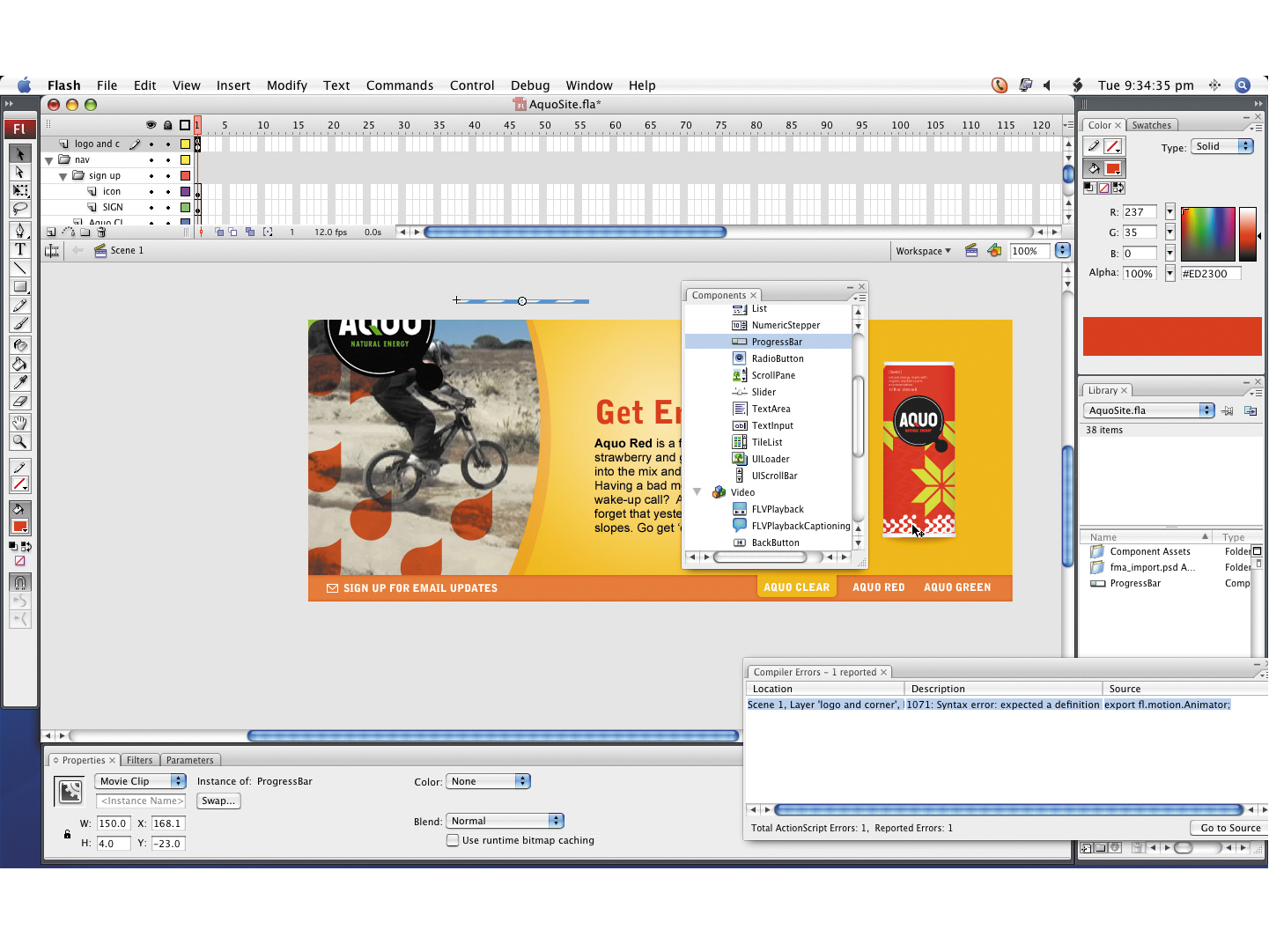TechRadar Verdict
Adobe's first release of Flash is surprisingly good, with some great improvements for almost every user
Pros
- +
Much improved interface
- +
Pre-built components for beginners
- +
Debugging tool for code fixing
- +
Photoshop and Illustrator integration
- +
Better drawing tools
Cons
- -
No real video improvements
Why you can trust TechRadar
There's a commonly used statistic that nine out of ten Flash designers use Photoshop, and three out of four use Illustrator. It's no surprise, therefore, that following Adobe's acquisition of Flash from Macromedia, top of every multimedia developer's wishlist is better integration with the company's existing products.
The most obvious signs of Flash's Adobe-isation are the Adobe palettes, such as Layers, Align, Swatches and Library, that Adobe has given to the majority of CS3 programs, and the CS3 interface, which lets you collapse palettes down to small square icons. There are also some Adobe-style tools in the Flash toolkit: cursors, shortcuts and modifier keys are the same as those you'd see and use in Photoshop for adding, deleting and converting anchor points.
Going primitive
Slightly less obviously, there are some new 'primitive' tools, which let you create easily re-configurable rectangles and ovals, although you'll need to play with them for a while to find a use for them.
Adobe has also ripped out Flash's old drawing engine and replaced it with Illustrator's to ensure artwork remains the same as you move it between the two programs.
CS3's new interface enhancements are to be welcomed, even by old Flash hands used to the Macromedia way, because they are both time and space savers. Adobe hasn't got rid of any of Flash's trademarks, such as its timelines or stage, and being able to use those Illustrator and Photoshop tools in Flash is a huge bonus; Flash was never as good for creating artwork as animating it.
Which takes us nicely to the next bit of integration: importing files. Bringing Illustrator and Photoshop files into Flash documents has become a lot more reliable. Using the Import function now brings up a dialog box that specifies in almost mind-numbing detail the layers in the file you've selected. You can then choose which layers to import; whether to import them as Flash layers or not; the size to import them at; whether to import text as editable, bitmap or vector outlines; and placement.
Flash, of course, is all about multimedia. Its timeline and the ActionScript programming language are what give it its real power. While the timeline has always been easy to use, ActionScript has been the real barrier for designers who are unwilling to turn themselves into programmers. One of the big improvements in Flash CS3 is the ability to convert timeline between animations to ActionScript 3.0. This means you can animate visually and then convert the animation into editable code, ready for handing over to a programmer.
Said programmers are also going to be happy with the ActionScript debugger in Flash CS3, the same as can be found in Flex Builder 2, which lets them step through properties to find bugs. It's still not as powerful as a top-end programming IDE, but there's far less guesswork involved.
Built-in components
Flash beginners are going to be more pleased by the set of pre-built skinable components, such as buttons, progress bars and checkboxes. Rather than having to write code to modify the look of interface components, you can just double-click a component state and draw.
This pre-built set of components also includes video objects. Improvements to Flash's video output and encoding tools are pretty minimal in CS3, so don't buy it expecting a revolution in quality. But there is a new export function that converts Flash movies into QuickTime.
All in all, there's a good selection of tools: easier code and design generation that finally make it possible to get something useful out of Flash without an intensive training course; improved creation and workflow tools; and a better programming environment for old pros. And, of course, we must mention for Mactel users that Flash is running at native speeds thanks to promotion to universal binary status.
At £575, it's a little pricey for new users, but the upgrade price of £164 is a bargain. If multimedia's your thing, Flash CS3 is the way to go.
Tech.co.uk was the former name of TechRadar.com. Its staff were at the forefront of the digital publishing revolution, and spearheaded the move to bring consumer technology journalism to its natural home – online. Many of the current TechRadar staff started life a Tech.co.uk staff writer, covering everything from the emerging smartphone market to the evolving market of personal computers. Think of it as the building blocks of the TechRadar you love today.
Most Popular



